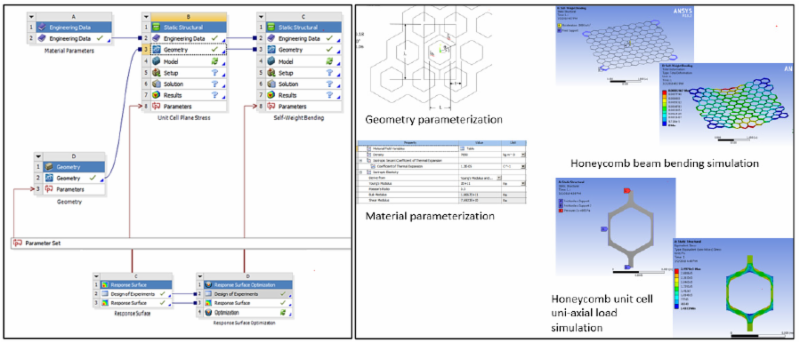 Biomimicry is the the practice of basing design off of natural structures, such as honeycombs, for example. It has been used frequently in conjunction with 3D printing, as researchers, designers and engineers take advantage of 3D printing’s ability to create complex structures like those created by nature.
Biomimicry is the the practice of basing design off of natural structures, such as honeycombs, for example. It has been used frequently in conjunction with 3D printing, as researchers, designers and engineers take advantage of 3D printing’s ability to create complex structures like those created by nature.
Arizona State University and Phoenix Analysis and Design Technologies (PADT) are frequent collaborators who have just received a $127,000 Small Business Technology Transfer (STTR) Phase 1 Grant from NASA. The purpose of the grant is to allow the two institutions to further study in biomimicry and 3D printing.
“We’re honored to continue advanced research on biomimicry with our good friends and partners at ASU,” said Rey Chu, Principal and Co-Founder, PADT. “With our combined expertise in 3D printing and computer modeling, we feel that our research will provide a breakthrough in the way that we design objects for NASA, and our broad range of product manufacturing clients.”
PADT recently helped NASA to develop more than 100 parts for the Orion Mission, its manned spaceflight to Mars. NASA applications for this latest grant will include the design and manufacture of high performance materials for use in heat exchangers, lightweight structures and space debris resistant skins. If the first phase is successful, PADT and ASU will be eligible for another, larger grant from NASA.
“New technologies in imaging and manufacturing, including 3D printing, are opening possibilities for mimicking biological structures in a way that has been unprecedented in human history,” said Dhruv Bhate, Associate Professor, Arizona State University. “Our ability to build resilient structures while significantly reducing the weight will benefit product designers and manufacturers who leverage the technology.”
We spoke to Bhate and Eric Miller, Co-Founder and Principal at PADT, for further details about the work that will be taking place under the grant.
What kinds of biological structures are going to be studied under the grant?
“In Phase I, the research is focused on insect nests and the relationship between material and design since the nests are constructed with a range of materials such as bees’ wax, paper and clay. The baseline natural model is the wild honeybee comb, along with nests made by other social insects such as wasps and hornets. These types of structures are perfect for replication with 3D printing because insects build structures in an additive way as well. Many of these shapes can only be created using an additive process, in nature and in industry.”
How has biomimicry been used in industries such as aerospace in the past?
“Hexahedral sandwich panels, which are like a single layer, flat bee-hive structure, have been used in aircraft design for decades. Many aircrafts that are made with carbon fiber composites use flat hex structures to provide light weight strength. With 3D printing, manufacturers can take this proven structure and move beyond flat panels.
A recent example of biomimicry in aerospace was a concept design by Airbus engineers who adapted the venation patterns in the Amazonian water lily to the design of wing spoiler to be 3D printed in metal with the laser power bed fusion process. Airbus has also investigated the use of surface textures that mimic sharkskin to reduce drag.”
What kind of work have ASU and PADT done with biomimicry so far?
“In 2016, PADT won a multi-million-dollar grant from America Makes, a national additive manufacturing innovation institute, to conduct research on lattice structures, a type of structure that has potential to change infrastructure and product development as a whole, especially in aerospace and medical. Part of this research was to develop predictive models for the mechanical behavior of cellular materials including honeycomb structures.
ASU and PADT also published a paper on biomimetic cellular materials at the 2016 Solid Freeform Fabrication Symposium, America’s largest academic conference on Additive Manufacturing.
The STTR grant is the first research grant PADT and ASU have won as a team that directly involves the use of biomimicry in guiding design.”
What industries will be focused on to benefit from the research?
“The aerospace industry is the primary beneficiary from this research. In the aerospace industry, structures need to have certain properties such as strength or insulation, while remaining extremely lightweight.
Moving forward, this work can be applied to the defense industry for armor design, to the biomedical industry for improving implant design, and to consumer applications such as footwear, in which cushioning, and durability is of importance.
The same advantages of biomimicry in the aerospace world – less weight for greater strength in complex shapes – also benefit the automotive industry. As the automotive industry moves to more efficient electric vehicles, structures that use biomimicry will become more prevalent.”
Discuss this and other 3D printing topics at 3DPrintBoard.com or share your thoughts below.



113 Replies to “Arizona State University and PADT Receive Grant to Research Biomimicry and 3D Printing”
Comments are closed.